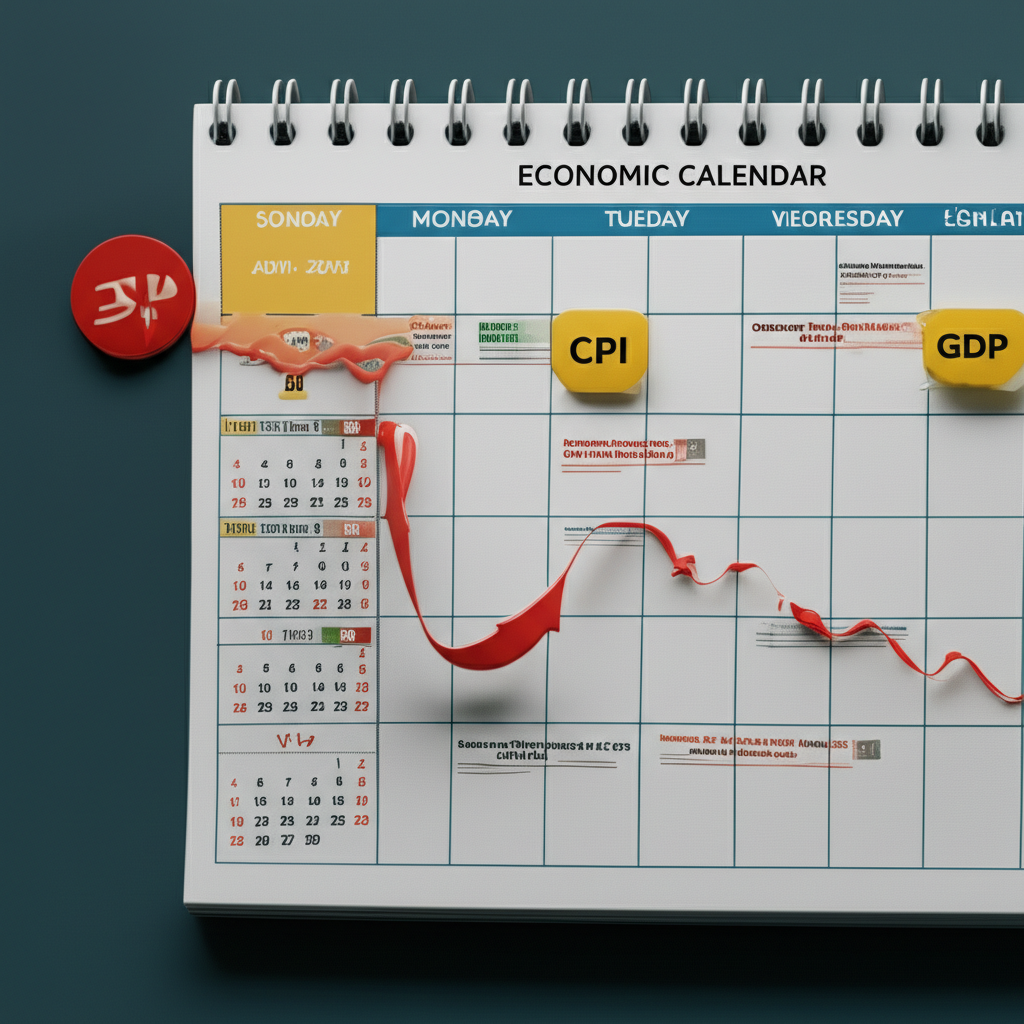Introduction: The Power of Forex News in Trading

In the fast-paced realm of foreign exchange trading, timely and accurate information isn’t just helpful—it’s the cornerstone of success. Currency values shift by the second, driven not by random fluctuations but by a constant stream of economic data, policy shifts, and global events. This flow of information—commonly referred to as forex news—acts as the engine behind market momentum. For both newcomers and experienced traders, the ability to interpret this information and respond effectively can mean the difference between long-term profitability and costly missteps. This in-depth guide will walk you through the critical role of news in forex, break down the types of events that move markets, and show you how to transform raw data into a strategic advantage. By the end, you’ll be equipped to anticipate volatility, align your trades with fundamental drivers, and make decisions grounded in insight rather than impulse.
Understanding the Forex News Landscape: Types of Market-Moving Events

Not all news carries the same weight in the forex arena. The market reacts to a wide spectrum of events, but certain categories consistently trigger significant price action. Recognizing these categories allows traders to prioritize their focus, prepare for volatility, and understand the underlying forces shaping currency movements. From scheduled data releases to unexpected geopolitical flare-ups, each event type sends unique signals to the market.
Economic Calendar Events: High-Impact Data Releases
Perhaps the most predictable yet powerful drivers of short-term movement are scheduled economic reports. These releases offer quantifiable snapshots of a nation’s economic performance, allowing traders to assess strength, growth, and inflation trends. When actual figures diverge from expectations, the reaction can be swift and sharp.
- Non-Farm Payrolls (NFP): Published monthly by the U.S. Bureau of Labor Statistics, this report details job gains in the U.S. private sector, excluding farming, government, and nonprofit roles. As a leading indicator of consumer health and economic momentum, it often triggers strong reactions in USD pairs. Traders closely watch for surprises that could signal shifts in Federal Reserve policy. The latest official figures can be accessed directly through the Bureau of Labor Statistics.
- Consumer Price Index (CPI): A key measure of inflation, CPI tracks changes in the price of goods and services purchased by urban households. Persistent inflation often pressures central banks to raise interest rates, boosting a currency’s appeal. Conversely, falling CPI may suggest economic weakness and potential rate cuts.
- Gross Domestic Product (GDP): This comprehensive figure reflects the total value of all goods and services produced in a country over a specific period. While released quarterly, GDP is a vital gauge of overall economic expansion or contraction and influences long-term currency trends.
- Retail Sales: Often called the “pulse” of consumer spending, this monthly report measures total sales at retail establishments. Since consumer demand drives a large portion of economic activity, strong retail numbers typically support bullish sentiment for a currency.
- Manufacturing PMIs (Purchasing Managers’ Index): Based on surveys of industry executives, PMIs provide early insight into the health of the manufacturing sector. A reading above 50 indicates expansion, while below 50 signals contraction. These forward-looking indicators often move markets ahead of official data releases.
Central Bank Announcements & Monetary Policy

Central banks wield immense influence over currency markets through their control of monetary policy. Institutions like the U.S. Federal Reserve, European Central Bank, Bank of England, and Bank of Japan set interest rates, manage money supply, and communicate economic outlooks—all of which directly affect capital flows and currency valuations.
- Interest Rate Decisions: One of the most anticipated events on the trading calendar, interest rate changes impact borrowing costs and investment yields. Higher rates generally attract foreign capital seeking better returns, increasing demand for the currency. Lower rates can lead to outflows and depreciation. For example, the Federal Reserve’s policy statements are dissected for hints on future tightening or easing cycles.
- Press Conferences & Policy Statements: Often more impactful than the rate decision itself, these communications reveal the central bank’s rationale, economic projections, and forward guidance. A hawkish tone—suggesting future rate hikes—can strengthen a currency, while dovish language may weaken it. Traders pay close attention to subtle shifts in wording that might signal policy changes.
Geopolitical Events & Global Developments
Beyond economics, political stability and international relations play a crucial role in shaping investor confidence. Unexpected events can trigger rapid risk reassessment and capital reallocation.
- Political Instability & Elections: Uncertainty surrounding leadership changes, coalition governments, or civil unrest can erode investor confidence. Countries perceived as politically unstable often see reduced foreign investment, leading to currency depreciation.
- Trade Wars & Sanctions: Tariff disputes, export restrictions, or sanctions between major economies can disrupt trade flows and impact current account balances. For instance, tensions between the U.S. and China often ripple through commodity and currency markets.
- Major Global Crises: Events such as pandemics, wars, or natural disasters can trigger broad “risk-off” sentiment. During such times, investors tend to sell riskier assets and move into safe-haven currencies like the U.S. Dollar, Japanese Yen, or Swiss Franc. In-depth analyses of such global trends are often available in publications like the IMF’s World Economic Outlook.
Commodity Prices (Especially Gold & Oil)
Some economies are heavily tied to commodity exports, making their currencies particularly sensitive to price swings in raw materials.
- Oil: As a major oil exporter, Canada sees its currency, the Canadian Dollar (CAD), closely linked to crude oil prices. When oil rallies, Canada’s export revenues rise, improving its trade balance and supporting the CAD. Similar dynamics affect other energy-exporting nations.
- Gold: Valued as a store of wealth during uncertain times, gold often moves inversely to the U.S. Dollar. The Australian Dollar (AUD) and Canadian Dollar (CAD) also show positive correlations with gold prices due to their status as significant gold producers. A surge in gold can therefore strengthen these currencies independently of other factors.
How Forex News Impacts Currency Markets: Mechanics of Volatility
Understanding why news causes price swings is essential for developing a sound trading approach. It’s not just about knowing *what* happened, but *how* the market processes that information.
Supply & Demand Dynamics
Currency values are ultimately determined by supply and demand. Positive news—such as stronger-than-expected GDP or rising interest rates—makes a country’s financial assets more attractive. This increases demand for its currency as investors seek exposure to a growing economy. On the flip side, negative data reduces confidence, leading to selling pressure and depreciation. The interplay between these forces is amplified when large institutions adjust their portfolios in response to new information.
Market Expectations vs. Actual Data
One of the most important concepts in news trading is that markets react to surprises, not just raw data. If analysts widely expect a strong jobs report, that optimism may already be reflected in the currency’s price before the actual release. When the number matches forecasts, the market may barely react. However, if the actual figure significantly exceeds or falls short of expectations, the deviation triggers rapid repositioning. This “beat or miss” dynamic is often more influential than the headline number itself.
Liquidity & Order Flow Reactions
During major news events, liquidity—the ease with which trades can be executed—can dry up momentarily. As institutional players and algorithmic systems react within milliseconds, order imbalances can cause price gaps, sharp spikes, or sudden reversals. These movements are often exacerbated by high-frequency trading algorithms programmed to execute trades based on real-time data feeds. As a result, the initial reaction may not reflect a sustainable trend, creating traps for traders who jump in too quickly.
Navigating the Economic Calendar: Your Essential News Tool
For any trader serious about fundamentals, the economic calendar is a mission-critical resource. It consolidates upcoming events, forecasts, and past data into a single, organized view, allowing you to plan your week with precision.
Key Features: Impact Ratings, Time Zones, Filters
Leading financial platforms like Forex Factory and FXStreet offer powerful calendar tools designed for forex professionals. Key features include:
- Impact Ratings: Events are color-coded or labeled as low, medium, or high impact. Focus your attention on high-impact releases, as these are most likely to generate meaningful price action.
- Time Zones: Ensure your calendar is set to your local time or to a standard like GMT to avoid confusion, especially when trading across multiple markets.
- Filters: Customize your view by currency, region, or event type. This helps you avoid information overload and zero in on the data that matters to your strategy.
- Previous, Forecast, Actual: These three columns are the heart of effective news analysis. Comparing the actual release to the forecast reveals whether the market has been surprised—a key trigger for volatility.
Planning Your Trading Week Around News
Proactive planning can significantly improve your trading outcomes. Instead of reacting to events as they happen, use the calendar to anticipate them.
- Pre-News Analysis: Review the upcoming week’s schedule. Identify which currencies are likely to be affected and research historical reactions to similar events. This helps you set realistic expectations.
- Identify Potential Volatility Zones: Mark the times of major releases on your trading chart. Consider whether you want to trade the volatility or step aside to avoid unpredictable swings.
- Adjust Trading Plans: If you’re holding positions ahead of a big announcement, consider reducing size, setting wider stop-losses, or closing trades altogether. Avoid entering new positions immediately before a release unless your strategy specifically targets news-driven moves.
Top Sources for Real-Time Forex News & Analysis
Speed and accuracy matter when trading news. Delayed or incorrect information can lead to poor decisions. Relying on trusted sources ensures you’re working with the same data that moves institutional markets.
Dedicated Forex News Portals (e.g., ForexFactory, FXStreet)
These platforms are built specifically for currency traders and combine multiple tools into one interface.
- ForexFactory: A favorite among professionals, it offers a detailed economic calendar with historical context, market impact ratings, and links to original reports. Its active community forum also provides real-time sentiment and discussion.
- FXStreet: Delivers live news updates, expert commentary, technical analysis, and a reliable calendar. The site frequently provides live coverage and expert breakdowns during key events like Fed meetings.
Financial News Agencies (e.g., Bloomberg, Reuters)
These are the primary sources that feed information to banks, hedge funds, and media outlets.
- Bloomberg: Offers deep market data, real-time news, and economic analysis through its terminal and public website. While full access requires a subscription, its free content is still highly authoritative.
- Reuters: Known for breaking news quickly and accurately, Reuters is often the first to report on economic data or geopolitical developments, making it a go-to for traders needing speed.
Brokerage News & Analysis
Many forex brokers integrate news feeds directly into their trading platforms. While the depth may vary, these services offer convenience by delivering relevant updates alongside your charts and order execution tools. Some brokers also provide daily or weekly market outlooks tailored to active traders.
Forex News Apps: Stay Informed On-The-Go
For traders who are mobile or manage positions throughout the day, dedicated apps ensure you stay connected. Platforms like Forex Factory and FXStreet offer robust mobile applications that deliver push notifications for high-impact news, allowing you to respond quickly even when away from your desk.
Strategic Approaches to Trading Forex News
Successfully incorporating news into your trading strategy requires more than just awareness—it demands discipline and a clear methodology. The following approaches allow traders to engage with news events in a structured way, tailored to their risk tolerance and trading style.
| Strategy Type | Description | Key Considerations |
|---|---|---|
| Pre-News Release | Adjusting positions or avoiding trades before high-impact news. | Risk aversion, hedging, reducing exposure. |
| Post-News Release | Waiting for market confirmation after news to trade the reaction. | Patience, confirmation signals, avoiding initial spikes. |
| Trading Volatility | Short-term methods like scalping or breakout trading during news. | High risk, quick execution, tight stop-losses. |
| Trading the Trend | Identifying fundamental shifts from news that initiate or accelerate longer-term trends. | Broader perspective, patience for trend confirmation. |
Pre-News Release Strategy: Anticipation & Position Management
Many experienced traders choose to manage risk before a major announcement rather than during the chaos that follows.
- Avoid Trading: A conservative but effective tactic is to close all open trades and remain flat during high-impact news windows. This eliminates exposure to unpredictable gaps or slippage.
- Hedging: If you must hold a position, consider opening an offsetting trade to neutralize directional risk temporarily. Once the market stabilizes, you can remove the hedge and resume your original strategy.
- Scaling Out: Take partial profits before the news hits. This locks in gains and reduces overall risk on the remaining position, giving you more flexibility regardless of the outcome.
Post-News Release Strategy: Reaction & Confirmation
Instead of reacting impulsively, this method emphasizes observation and patience.
- Wait for Confirmation: Allow the initial surge or drop to settle. Look for price to close above resistance or below support on the 15-minute or hourly chart, indicating that the move has momentum.
- Trade the Reaction: Once a clear direction emerges, enter in line with the new trend. This approach reduces the risk of being caught in false breakouts and improves the probability of a successful trade.
Trading the Volatility: Scalping & Breakout Techniques
For those with quick reflexes and a high-risk appetite, news events offer opportunities for rapid gains.
- Scalping: This involves capturing small price movements in the first few minutes after a release. Success requires fast execution, a reliable platform, and strict discipline with stop-loss orders.
- Breakout Trading: Identify key support and resistance levels near the current price. Place pending orders slightly above resistance or below support, aiming to catch the momentum if the news triggers a strong move through those levels.
Trading the Trend: Fundamental Shifts from News
Sometimes, news doesn’t just cause a short-term spike—it signals a broader shift in economic direction.
- Fundamental Shift Identification: Look for news that alters the long-term outlook, such as a central bank pivoting to aggressive tightening or a country entering a recession. These developments can set the stage for trends that last weeks or months.
- Trend Confirmation: Combine the news with technical analysis. Wait for indicators like moving averages or trendlines to confirm the new direction before committing significant capital.
Risk Management Essentials for News Trading
No strategy can succeed without solid risk controls, especially in the turbulent environment of news trading.
- Stop-Loss Placement: Always use stop-loss orders. During high volatility, slippage is possible, but a stop-loss remains your primary safeguard against large losses. Adjust placement based on strategy—tighter for scalping, wider for trend-following.
- Position Sizing: Reduce your trade size around major news. Volatility increases risk, so risking 1-2% of your account per trade helps preserve capital during unpredictable moves.
- Avoid Over-Leveraging: The temptation to放大 gains during volatile periods is strong, but excessive leverage can lead to margin calls. Stick to conservative leverage, especially when uncertainty is high.
Common Pitfalls and How to Avoid Them in News Trading
Even skilled traders can fall into traps when emotions run high during news events. Recognizing these mistakes is the first step toward avoiding them.
Chasing Spikes & False Breakouts
The immediate aftermath of a news release often features erratic price action. Traders who rush in after a sudden spike frequently find themselves on the wrong side of a reversal. The market may overshoot before correcting. A disciplined approach—waiting for confirmation—helps avoid these costly errors.
Ignoring Market Sentiment & Technical Levels
News doesn’t exist in isolation. The prevailing market mood and key technical levels heavily influence how price reacts. A positive jobs report might fail to push prices higher if the broader trend is bearish or if price meets strong resistance. Always assess the larger context before acting.
Over-Leveraging & Insufficient Risk Management
This is the most common cause of account blowouts in news trading. The lure of quick profits tempts many to risk too much. Without proper stop-losses and conservative position sizing, a single adverse move can erase weeks of gains. Treat risk management not as an afterthought, but as the foundation of every trade.
Conclusion: Harnessing Forex News for Informed Trading
Forex news is the heartbeat of the currency market—driving volatility, shaping trends, and creating opportunities for those who understand its rhythm. By mastering the different types of market-moving events, recognizing how expectations shape reactions, and applying disciplined strategies, you can turn information overload into a strategic advantage. Success doesn’t come from reacting fastest, but from responding wisely. Use the economic calendar as your roadmap, rely on trusted news sources, and always prioritize risk management. With consistent learning and a calm, analytical mindset, you can leverage the power of forex news not as a gamble, but as a structured pathway to more informed and confident trading decisions.
What are the most critical economic news releases that impact forex markets?
The most critical economic news releases that typically cause significant volatility in forex markets include Non-Farm Payrolls (NFP), Consumer Price Index (CPI), Gross Domestic Product (GDP), interest rate decisions from major central banks (Fed, ECB, BoE, BoJ), and retail sales figures.
How can I effectively use an economic calendar to plan my forex trading?
To effectively use an economic calendar, prioritize high-impact events, customize it to your time zone and relevant currencies, and compare the ‘actual’ data against ‘forecast’ and ‘previous’ figures. Use it to anticipate potential volatility and adjust your trading plans, either by avoiding trades around news or preparing specific news trading strategies.
What’s the difference between fundamental and technical analysis when reacting to forex news?
Fundamental analysis focuses on interpreting the underlying economic and geopolitical factors presented in the news to determine a currency’s intrinsic value and future direction. Technical analysis involves studying price charts and indicators to identify patterns, support/resistance levels, and trends, which can then be used to pinpoint entry and exit points in response to the market’s reaction to news.
Is it advisable for beginner traders to trade during high-impact news events?
Generally, it is not advisable for beginner traders to actively trade during high-impact news events. The extreme volatility, potential for slippage, and rapid price reversals can lead to significant losses. Beginners are often better served by observing market reactions and practicing risk management by staying out of the market during these periods.
Which specific central bank announcements typically cause the most volatility in forex?
Interest rate decisions and accompanying policy statements or press conferences from the world’s major central banks—the Federal Reserve (U.S.), European Central Bank (Eurozone), Bank of England (UK), and Bank of Japan (Japan)—tend to cause the most significant volatility due to their direct impact on global capital flows and economic outlooks.
How does geopolitical instability influence major currency pairs like EUR/USD or USD/JPY?
Geopolitical instability typically leads to a “risk-off” sentiment. This often strengthens safe-haven currencies like the U.S. Dollar (USD) and Japanese Yen (JPY) as investors seek refuge from uncertainty. Consequently, pairs like EUR/USD might fall (USD strengthens), and USD/JPY could rise (JPY weakens against the USD, but strengthens as a safe haven against other currencies).
What are some common mistakes traders make when attempting to trade forex news, and how can they be avoided?
Common mistakes include chasing initial spikes, over-leveraging, ignoring existing market sentiment, and failing to use proper risk management (e.g., no stop-loss). These can be avoided by exercising patience, waiting for market confirmation, always using stop-losses, reducing position sizes during high volatility, and understanding the broader market context.
Can forex news applications provide sufficient information for making informed trading decisions?
Forex news applications are excellent for real-time updates and alerts, providing essential information. However, for truly informed trading decisions, they should be supplemented with deeper analysis from reputable financial news agencies, a comprehensive economic calendar, and personal technical analysis to contextualize the news within market trends.
How do commodity prices, especially gold and oil, correlate with forex market movements?
Commodity prices correlate with “commodity currencies.” For example, rising oil prices often strengthen the Canadian Dollar (CAD) as Canada is a major oil exporter. Gold, seen as a safe haven, tends to strengthen the Australian Dollar (AUD) and Canadian Dollar (CAD) (as major gold producers) during times of market uncertainty, and often moves inversely to the U.S. Dollar.
What strategies can I employ to manage risk effectively when trading forex news?
Effective risk management strategies for news trading include:
- Always using stop-loss orders to limit potential losses.
- Reducing your position size to account for increased volatility.
- Avoiding excessive leverage.
- Considering hedging strategies for existing positions.
- Choosing to stay out of the market entirely during particularly high-impact events if you prefer to avoid the volatility.

留言